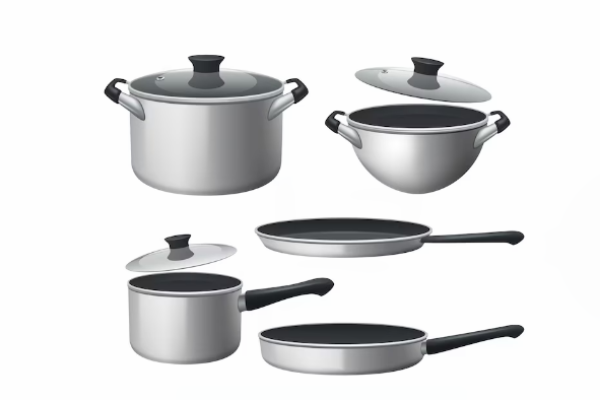Project Report For Lid
Introduction
Project Report for Lid pot is as follows
A lid pressure cooker is a kitchen appliance used for cooking food under high pressure and temperature. It consists of a metal pot with a tightly sealed lid, which locks in the pressure and heat. The lid has a safety valve and a pressure regulator that allows you to control the pressure inside the pot. When cooking in a pressure cooker, steam builds up inside the pot, causing the pressure to increase. This, in turn, raises the boiling point of water, which allows food to cook faster and more evenly.
It saves time because it cooks meals significantly faster than traditional techniques. A pot roast, for example, that would normally take hours to cook on the stove can be ready in under an hour in a pressure cooker. Furthermore, the increased pressure and temperature aid in the breakdown of tough fibres in meats, making them more tender and tasty.
Process for Lid
- Material Selection: The first step in the lid manufacturing process is to choose the appropriate material. Lids can be made from various materials, such as metal, plastic, or composite materials. The choice of material depends on the specific application, such as the type of product being stored, the temperature requirements, and the desired level of durability.
- Forming: The next step is to form the lid into the desired shape. This can be done using several methods, such as stamping, punching, or molding. For metal lids, the material is typically cut into the required shape using a stamping or punching machine. For plastic lids, the material is heated and then molded into the desired shape using a mold.
- Coating: After the lid has been formed, it may need to be coated with a protective layer. This can be done using various methods, such as painting or electroplating. The coating helps to protect the lid from corrosion, wear and tear, and other environmental factors.
- Printing: If the lid is to be labeled or branded, the next step is to print the necessary information or design onto the lid. This can be done using various methods, such as screen printing or digital printing. The printing process ensures that the lid is easily identifiable and helps to enhance the branding of the product.
- Inspection: Before the lid is packaged and shipped, it undergoes a thorough inspection process. This ensures that the lid meets the necessary quality standards and is free from any defects or imperfections. The inspection process includes visual checks, measurements, and other quality control tests.
- Packaging: The final step in the lid manufacturing process is packaging. The lids are packaged into boxes or containers, which are then labeled and shipped to the customer. The packaging process ensures that the lids are protected during transport and are delivered to the customer in good condition.

Get Completely Custom Bankable Project Report
Market Potential for Lid
The disposable lids industry is anticipated to reach a value of $5 billion. The market is expected to decline at a CAGR of 4.5% over the forecast period. The market is anticipated to reach US$ 3.2 billion in 2023.
The lid market’s growth is the increasing adoption of e-commerce. With the rise of online shopping, packaging has become a critical aspect of the customer experience. Consumers want their products to be delivered safely and securely, without any damage during transit. Lids play a crucial role in ensuring the product’s safety during transportation, preventing spills and leaks. This has led to a growing demand for high-quality and reliable lid solutions in the e-commerce sector.
Finally, the growing need for convenience and easy-to-use packaging is driving the lid market’s growth. Consumers are increasingly seeking packaging solutions that are easy to open, close, and reseal. Lids provide a simple and effective way to achieve this, ensuring that the contents of the container remain fresh and secure. Additionally, innovative lid designs, such as peel-and-reseal and tear-tab lids, are gaining popularity as they offer added convenience to consumers.

